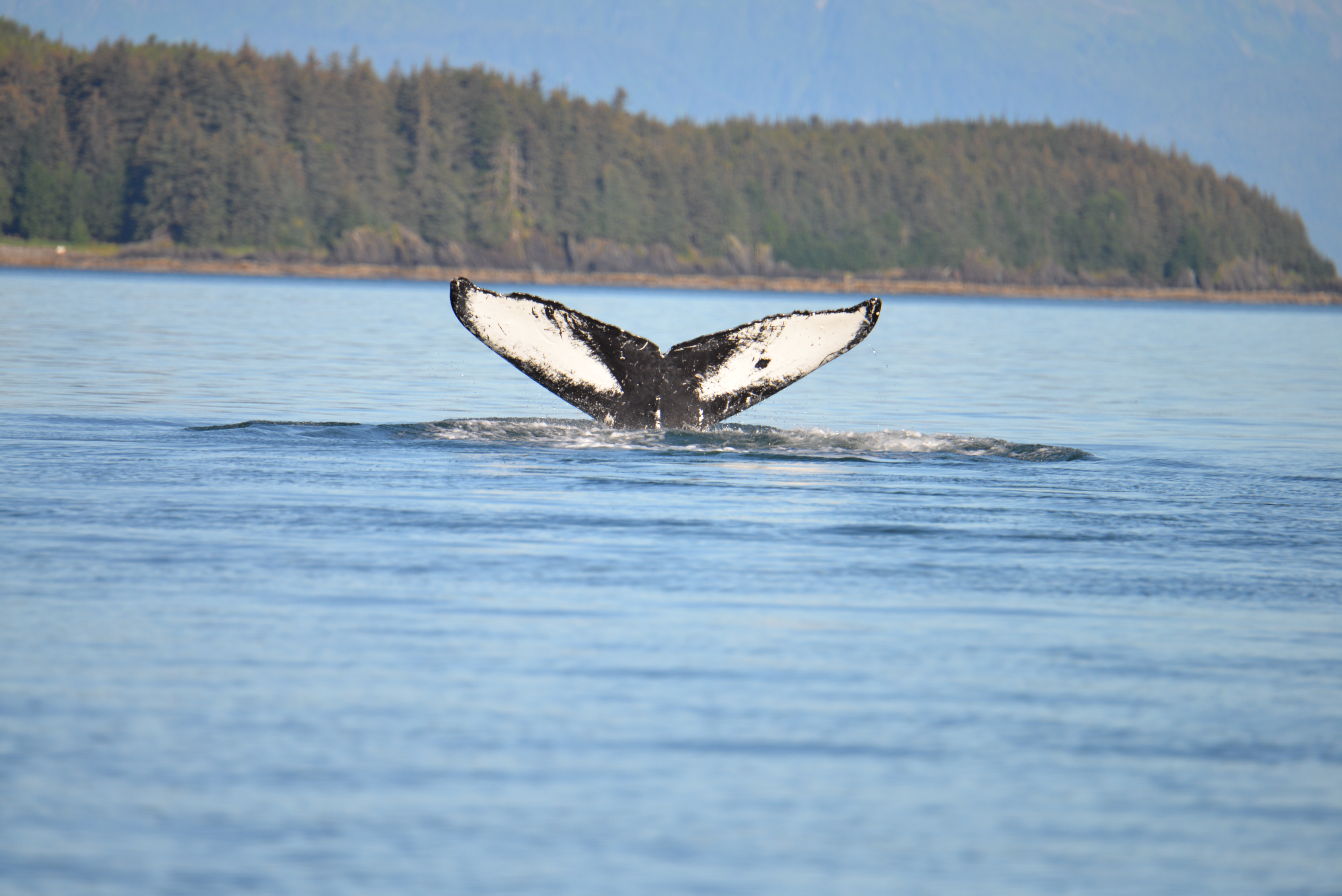Jenna Schwerzmann
Back in 2015, the Whale SENSE program welcomed six new companies from Juneau, Alaska. Until that time, all participants were located on the Atlantic coast. Now, in 2017, the number of Whale SENSE participants in Alaska has doubled! Tourists can now find Whale SENSE-approved companies in Juneau, Ketchikan, Valdez, and Seward.
I was curious how this expansion happened so quickly. So, I spoke to the coordinator of the Whale SENSE program in the Alaska region, Suzie Teerlink (pictured above). Suzie is also a Marine Mammal Specialist at NOAA Fisheries’ Protected Resources Division.
“I’d love to hear the history of how Whale SENSE came to Alaska.”
“Operator interest in Juneau was the impetus to bringing the program to Alaska. There is a relatively high number of tour operators in Juneau compared with other whale-watching areas. In general, most operators are good at sticking to the regulations and there is good community collaboration where operators will help remind one another when and if it is needed.”
However, because there are so many companies in one area, there have been issues of vessel crowding around whales. This has raised concerns over the welfare of the whales, the reputation of the industry, and the relationship between the industry and the community. So, in this sense, it isn’t necessarily an issue of enforcing regulation, but more about ensuring sustainability in this industry.
Several Juneau-based operators recognized these potential issues and organized to brainstorm solutions. In my eyes, these operators are real leaders. Their goals were to: help reduce vessel crowding, increase on-the-water communication, and work with NMFS management to reduce impacts to whales and increase educational standard. They came together and agreed that Whale SENSE was the program they would like to work with, and were pivotal in shaping the Alaska sector of Whale SENSE.”
“Why did they choose Whale SENSE, rather than create their own program or work within a similar, existing framework?”
“Ultimately, it was the operators’ decision to join forces with Whale SENSE in 2015. I believe that there was interest in collaborating with NMFS and Whale and Dolphin Conservation and working together toward similar goals. That is the beauty of this type of partnership, we are all interested in the same thing: reducing impacts to wildlife and increasing educational messaging as a way to ensure sustainability of whales and whale-watching.”
“What proportion of Alaskan whale watch tour operators are currently recognized by the Whale SENSE program?”
“This is difficult to answer, because there are some companies that have a fleet of whale watch boats, and others that operate mainly as a fishing charter but offer whale watching tours. One company to another is not apples to apples. If you look at it in number of vessels, there are over 70 boats that advertise whale watching out of Juneau. Of those, approximately 75% belong to companies that are part of the Whale SENSE program.”
“Why do you think the number of recognized whale watches doubled this year?”
“I think that as the program gains recognition, more and more companies are interested in participating. Also, I believe that the program aligns well with the mission of the participating companies, so the small changes that needed to be made were not overwhelming.”

“Many tourists are drawn to Alaska for its natural beauty and wildlife. Do you think tourists are eager to support this kind of program?”
“I think so. I think that people care about general ocean stewardship and want to be sure that their presence isn’t contributing to something that’s bad for wildlife. However, it might not always be the first thing on their radar. Sometimes they are thinking of other priorities first, and it isn’t until they become aware of potential impacts that, that they make something like Whale SENSE a priority when choosing a tour.”
“What do you mean by “other priorities”?”
“Some may want to know which tours are going to get closest to the whales. Once they know about the regulations that all whale watching operators must follow, and realize that all companies must stay 100- yards away, that’s not important anymore. It frees them up to consider other factors, such as stewardship and onboard education.”
“I’m curious, what kinds of stewardship projects do the Alaskan companies have going on?”
“There are several companies doing beach cleanups. Many are doing in-kind donations for school children, running educational trips for them. It’s my preference for the companies to take the stewardship project in their own direction. I love seeing companies find projects that are meaningful to them and fit within their companies’ missions and priorities.”
“What are your goals for the Alaska sector of the Whale SENSE program?”
“I would like to work on the recognition angle, versus the regulatory angle. Monitoring for compliance is a challenging endeavor, even with our written regulations and guidelines, these situations are nuanced and rarely black and white. While compliance and accountability are important and we will continue to invest in these, I’d also like to encourage leadership within the whale watching industry and create ways to further encourage companies that prioritize conservation and sustainability.”
“Is there anything else you would like readers to know?”
“In the Juneau area, the program has really changed the culture. The operators are now much better at communicating. Managers are on a first name basis, where they weren’t necessarily before. Camaraderie between the companies has improved, and there has been a lot of improvement in courtesy among operators out on the water.”

It was encouraging to hear that participation in the Whale SENSE program is paying off in Alaska. And according to Suzie, she hopes to have even more recognized companies around the State next year! You can support the Whale SENSE program by choosing one of these companies the next time you go on a whale watch, or simply by spreading the word about the program.

